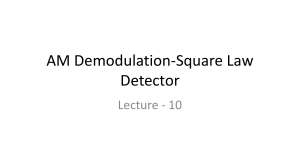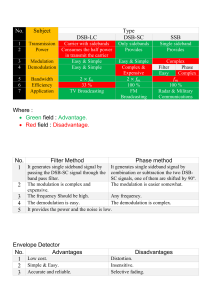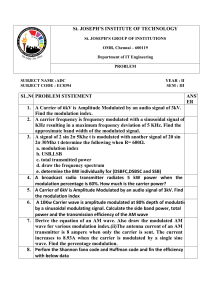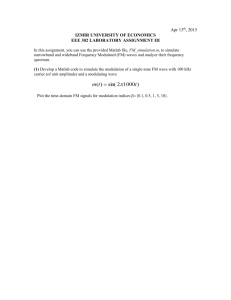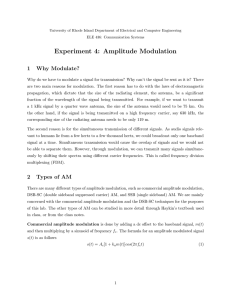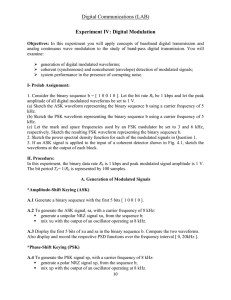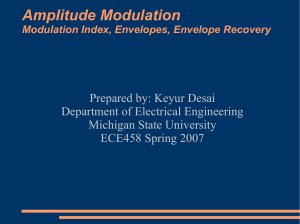Lecture S17 Muddiest Points General Comments
advertisement
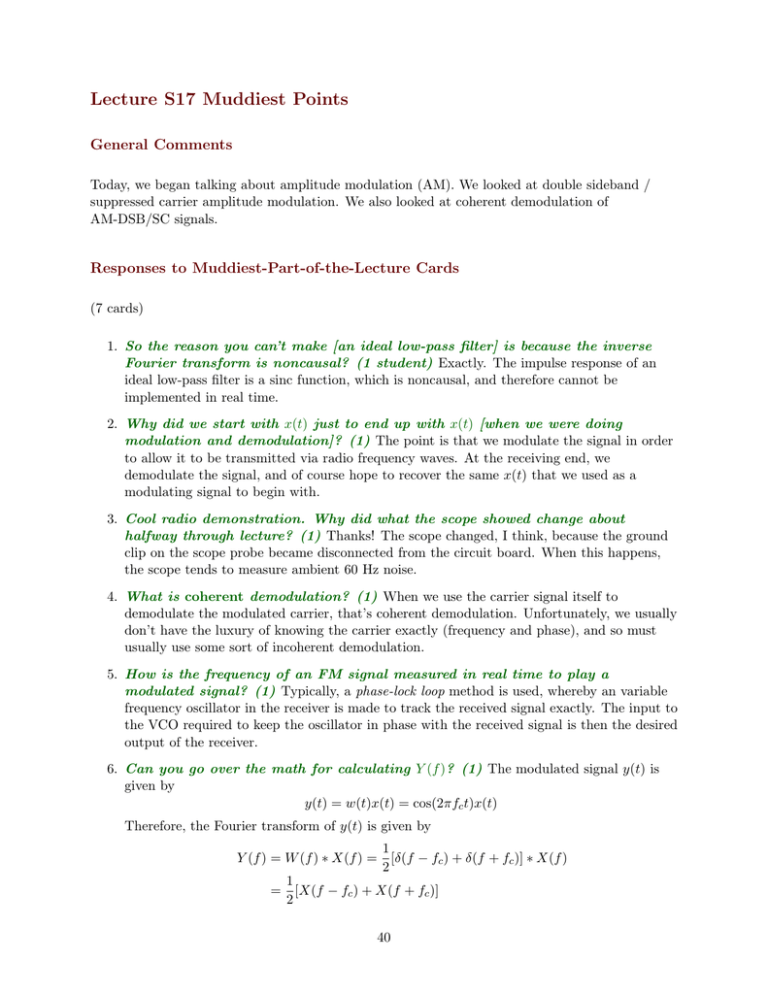
Lecture S17 Muddiest Points General Comments Today, we began talking about amplitude modulation (AM). We looked at double sideband / suppressed carrier amplitude modulation. We also looked at coherent demodulation of AM­DSB/SC signals. Responses to Muddiest­Part­of­the­Lecture Cards (7 cards) 1. So the reason you can’t make [an ideal low­pass filter] is because the inverse Fourier transform is noncausal? (1 student) Exactly. The impulse response of an ideal low­pass filter is a sinc function, which is noncausal, and therefore cannot be implemented in real time. 2. Why did we start with x(t) just to end up with x(t) [when we were doing modulation and demodulation]? (1) The point is that we modulate the signal in order to allow it to be transmitted via radio frequency waves. At the receiving end, we demodulate the signal, and of course hope to recover the same x(t) that we used as a modulating signal to begin with. 3. Cool radio demonstration. Why did what the scope showed change about halfway through lecture? (1) Thanks! The scope changed, I think, because the ground clip on the scope probe became disconnected from the circuit board. When this happens, the scope tends to measure ambient 60 Hz noise. 4. What is coherent demodulation? (1) When we use the carrier signal itself to demodulate the modulated carrier, that’s coherent demodulation. Unfortunately, we usually don’t have the luxury of knowing the carrier exactly (frequency and phase), and so must usually use some sort of incoherent demodulation. 5. How is the frequency of an FM signal measured in real time to play a modulated signal? (1) Typically, a phase­lock loop method is used, whereby an variable frequency oscillator in the receiver is made to track the received signal exactly. The input to the VCO required to keep the oscillator in phase with the received signal is then the desired output of the receiver. 6. Can you go over the math for calculating Y (f )? (1) The modulated signal y(t) is given by y(t) = w(t)x(t) = cos(2πfc t)x(t) Therefore, the Fourier transform of y(t) is given by 1 Y (f ) = W (f ) ∗ X(f ) = [δ(f − fc ) + δ(f + fc )] ∗ X(f ) 2 1 = [X(f − fc ) + X(f + fc )] 2 40 7. Class is not early enough. (1) I agree. I’ll pass this along to the folks who teach 16.05 and 16.06. With any luck, they will both start at 9:00 a.m. next year. 41
